
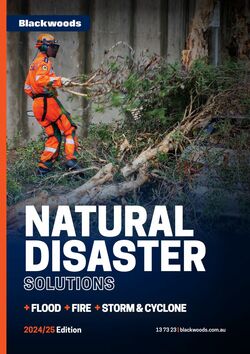
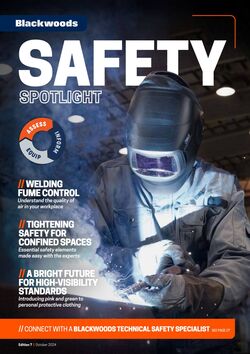
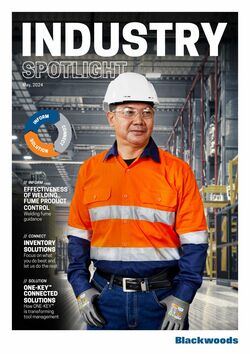
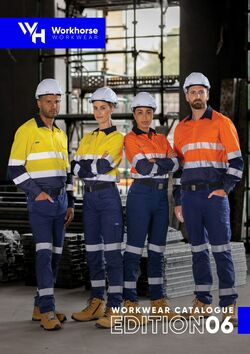
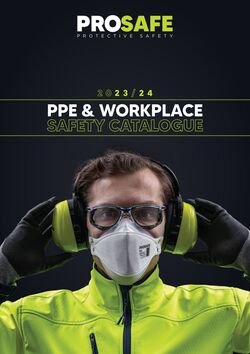
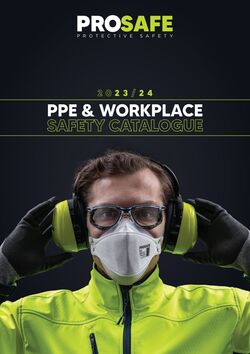
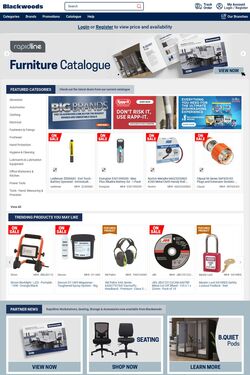
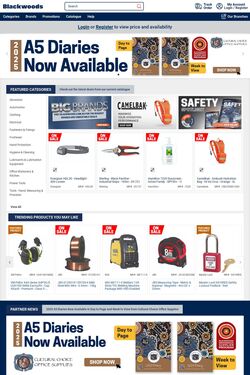
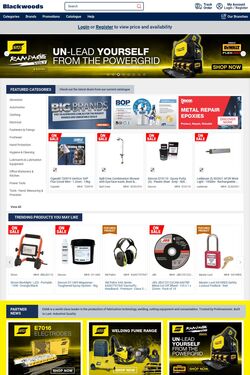
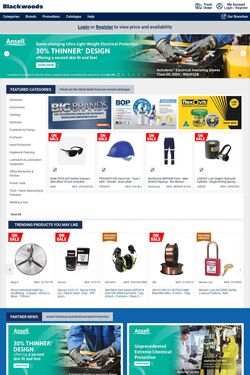
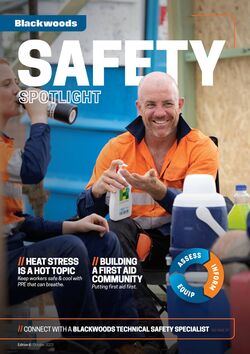
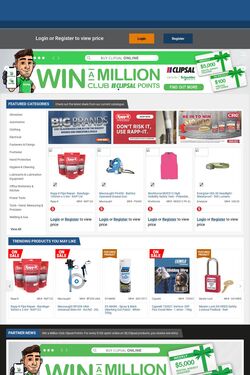
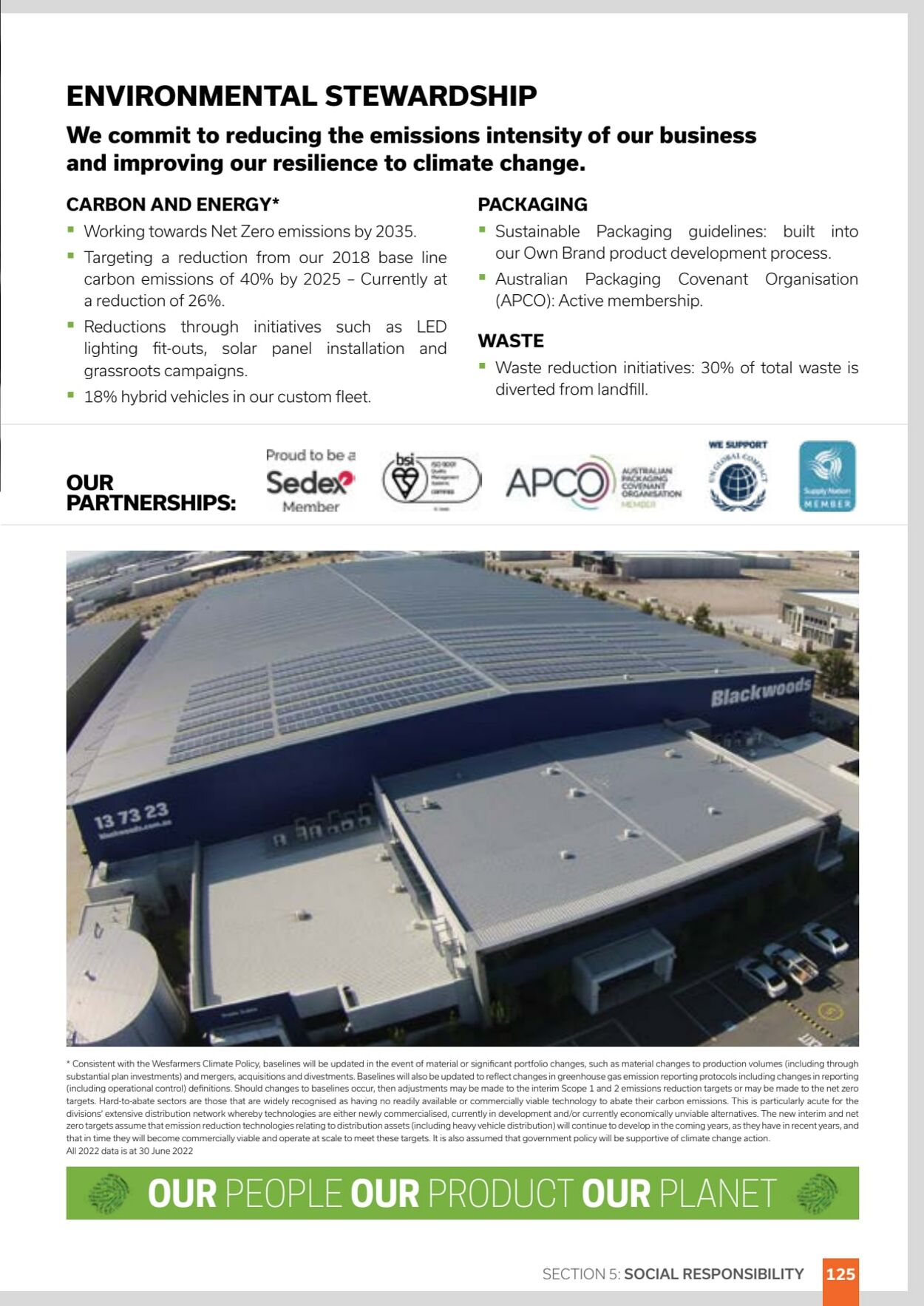
Products in this catalogue
ENVIRONMENTAL STEWARDSHIP We commit to reducing the emissions intensity of our business and improving our re nce to climate change. CARBON AND ENERGY* PACKAGING " Working towards Net Zero emissions by 2035. = Sustainable Packaging guidelines: built into * Targeting a reduction from our 2018 base line our Own Brand product development process. carbon emissions of 40% by 2025 - Currently at = Australian Packaging Covenant Organisation a reduction of 26%. (APCO): Active membership. Reductions through initiatives such as LED lighting fit-outs, solar panel installation and WASTE grassroots campaigns. = Waste reduction initiatives: 30% of total waste is 18% hybrid vehicles in our custom fleet. diverted from landfill. Proud to be 2 bsi ——— OUR Sed ( E ) ae PARTNERSHIPS: oder ¥ = APCO) — * Consistent with the Wesfarmers Climate Policy, baselines will be updated in the event of material or significant portfolio changes, such as material changes to production volumes (including through substantial plan investments) and mergers, acquisitions and divest ments. Baselines will also be updated to reflect changes n greenhouse gas emission reporting protocols including changesin reporting {including operational control) definitions. Should changes to baselines occur, then adjustments may be made to the interim Scope 1 and 2 emissions reduction targets or may be made to the net zero targets. Hard-to-abate sectors are those that are widely recognised as having no readily available or commercially viable technology to abate their carbon emissions. This is particularly acute for the divisions’ extensive distribution network whereby technologies are either newly commercialised, currently in development and/or currently economically unviable alternatives. The new interim and net zero targets assume that emission reduction technologies relating to distribution assets (including heavy vehicle distribution) will continue to develop in the coming years, as they have in recent years, and thatin time they will become commercially viable and operate at scale to meet these targets. Its also assumed that government policy will be supportive of climate change action. All 2022 data is at 30 June 2022 SECTION 5: SOCIAL RESPONSIBILITY
| Name | Details |
|---|